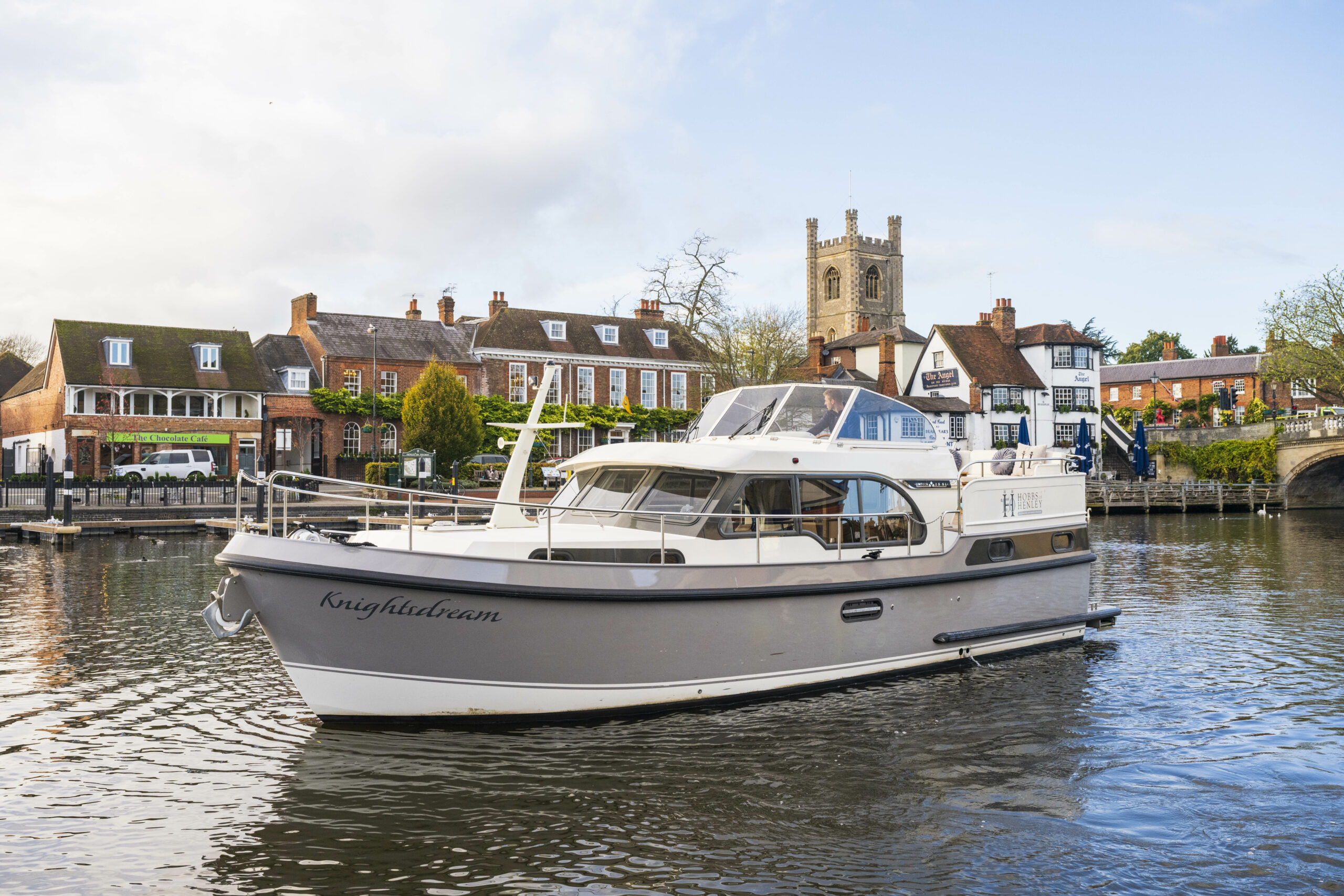
A 4 minute Read by Alice West

Image: @princeandprincessofwales
In the rich tapestry of British traditions, few are as enduring as the ceremonies that surround the monarchy. Steeped in history, these rituals harken back to eras long gone, bringing a sense of continuity and reverence to the modern age. One such tradition is that of the Royal Watermen, a group of individuals who took part in the King’s Coronation procession on 6th May 2023, upholding a legacy that spans over 800 years.

It was an honour to see our very own Jonathan Hobbs marching in front of the King’s carriage on Coronation Day, having been appointed a Royal Waterman in 2018. His father, Tony Hobbs, was a stalwart member of this distinguished group, having attended two royal weddings, five state openings of parliament, and numerous state visits during his tenure.

A Storied Past: The Royal Watermen Tradition
Historically, the primary duty of the Royal Watermen was to ferry the monarch across waterways, connecting palaces such as the Tower of London and Hampton Court.

Image: @cowardcujo
In recent years we have seen the Royal Watermen take centre stage in all Royal occasions involving the Thames: river pageants for the Queen’s Jubilees, for example. Onshore duties include acting as boxmen on royal carriages during state visits and Royal weddings. At Coronations, the Royal Watermen walk in the procession behind The King’s Bargemaster – the leader of the pack.

The Royal Bargemaster is in fact one of only two people – aside from monarchs and the Archbishop of Canterbury – permitted to handle the crown. The only other individual given this privilege is the Sovereign’s jeweller.
This role has evolved over time into a symbolic presence during significant state occasions since there are no longer any State Barges on the river, though the Royal Watermen are the official bodyguards for the Royal Nore – the official motor launch used whenever a member of the Royal Family travels on the river Thames for an official engagement – and the Royal Barge Gloriana.

The Select Few: Royal Watermen and their Selection Process

The Royal Watermen are an exclusive group – all tradespeople who earn their living from the river. To become a Royal Waterman is no small feat. Aspiring members must possess rowing experience, physical fitness to climb onto carriages and march for extended periods, and a deep commitment to upholding this venerable tradition. The application process itself is a testament to the role’s prestige – hopefuls apply to the palace and the lucky few will wait years before they are shortlisted for an interview.
There are 24 Royal Watermen appointed at any one time, each of whom receives a nominal annual salary of £3.50.
Tradition Meets Modernity: The Duties of Royal Watermen

Image: @floatmagazin
The Royal Watermen are more than just symbolic figures; they are an integral part of the sovereign’s bodyguard, joining other factions like the Archers, Yeomen of the Guard, and Gentlemen at Arms. Typically hailing from a background in the boating trade, many of these individuals are London-based and hold the post until their physical capabilities wane. This distinguished role extends beyond ceremonial duties, as many Royal Watermen have also competed in the historic ‘Doggett’s Coat and Badge Race,’ a competition for apprentice watermen.
Marching Towards a Grand Occasion: Preparing for the Coronation

The lead-up to the King’s Coronation Procession involved meticulous planning and training. In the week leading up to the Coronation the entire bodyguard assembled at Aldershot Barracks alongside the Grenadier Guards, where they coordinated logistics for the day.
Marching is an essential aspect of the procession, and a specialised training session at an RAF base in Hampshire (chosen for the sheer amount of space required to assemble thousands of military servicemen and women) helped hone their skills. While all the professional military enjoyed their lunchbreak, the Royal Watermen were tasked with extra marching practice, being the only non-military members of the procession.
The week’s intensive training culminated in a night rehearsal across deserted London streets and a 6am finish…
A Stalwart Presence: The Royal Watermen’s Role in the Coronation Procession

Image: @thefashionableexhibit
On the big day, the Royal Watermen marched from Wellington Barracks alongside the Welsh Guards to Westminster Abbey where they then stood on guard for 55 minutes while the King was crowned and an estimated 400 million people tuned in to watch across the world. After the ceremony, Jonnie and his fellow Watermen marched directly in front of the King’s carriage, flanked by the rest of the royal bodyguard and led by thousands of military personnel. Their duties culminated with a royal salute in the Buckingham Palace gardens – a poignant finish to an unforgettable day.

The Royal Watermen’s uniform has remained unchanged for centuries: skirted scarlet tunics with a silver gilt Royal Cypher, breeches, caps, scarlet stockings, white shirts and black buckled shoes.

A Legacy of Unbroken Commitment: Hobbs of Henley
For Hobbs of Henley, the presence of a team member among the Royal Watermen for 42 unbroken years is a source of immense pride. This unyielding commitment represents not just an individual achievement but also a testament to the town of Henley on Thames, symbolizing its lasting connection to the nation’s rich history and traditions.









